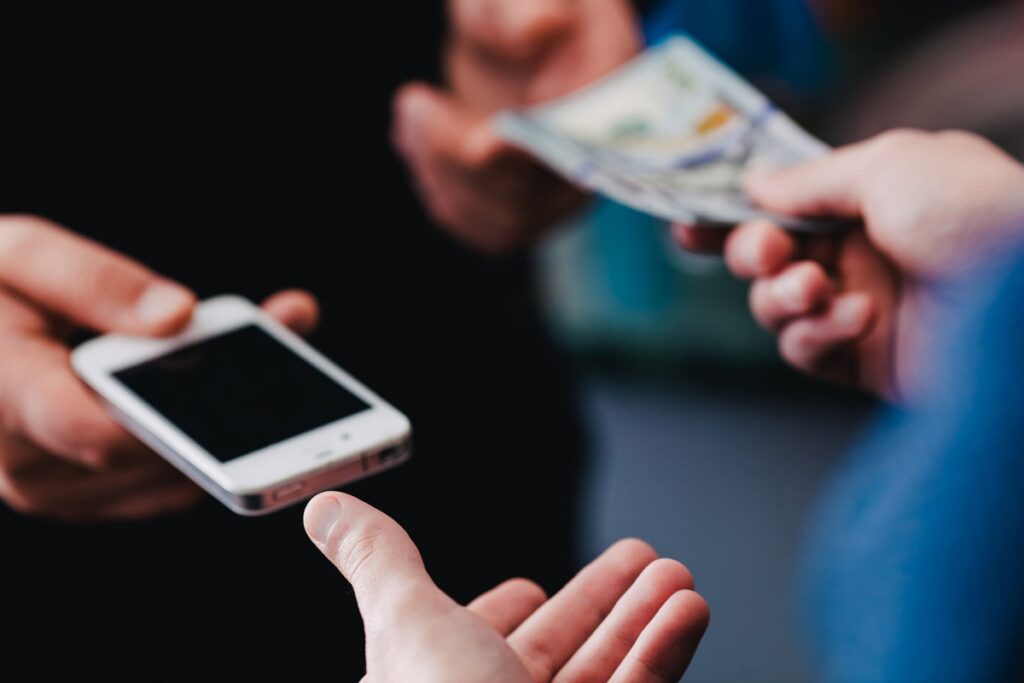
In recent years, the market for second-hand phones has experienced a massive surge. As smartphone prices continue to rise, consumers are increasingly turning to pre-owned or refurbished devices as a more affordable and sustainable alternative to purchasing brand-new models. With tech enthusiasts and budget-conscious buyers alike seeking ways to reduce their expenses, second-hand phones have become an appealing choice. But is buying a used phone a wise decision, and what should consumers know before making a purchase? In this article, we’ll explore the growing trend of second-hand phones, their benefits, potential risks, and tips for buying one.
What are Second-Hand Phones?
Second-hand phones are pre-owned devices that have been previously used by someone else. They can be sourced from individuals looking to sell their phones or from companies that specialize in buying and reselling used devices. The term “second-hand” is sometimes used interchangeably with “refurbished,” but there is a key difference between the two:
- Second-hand phones: These are devices that have been previously owned and may or may not have been tested or repaired before being resold.
- Refurbished phones: These phones have been returned to the manufacturer or a professional refurbisher for testing, repair, and restoration to a like-new condition. Refurbished devices usually come with a warranty.
While refurbished phones are typically in better condition than second-hand phones, both categories of devices represent significant savings compared to purchasing new ones.
Why Are Second-Hand Phones So Popular?
Several factors have contributed to the increasing popularity of second-hand phones. These factors highlight why consumers are opting for used devices over new ones.
1. Affordability
The most obvious advantage of second-hand phones is their lower cost. Flagship smartphones from brands like Apple, Samsung, and Google can be prohibitively expensive, especially when released as the latest models. By purchasing a second-hand phone, consumers can access high-quality devices at a fraction of the price, making premium brands more accessible to a wider audience.
2. Environmental Impact
In today’s world, environmental sustainability is a growing concern. By purchasing second-hand phones, consumers contribute to reducing electronic waste (e-waste). The production of new phones requires significant resources, including rare earth metals, plastics, and energy. Opting for a second-hand phone helps prolong the lifecycle of these devices, thus reducing the demand for new manufacturing and minimizing the impact on the environment.
3. Avoiding Depreciation
Smartphones are notorious for losing value quickly. Within just a year or two of purchase, the value of a new phone can drop by 30% to 50%. This rapid depreciation can be frustrating for people who frequently upgrade their devices. By purchasing a second-hand phone, consumers avoid the steep initial depreciation, allowing them to buy a relatively recent model at a more reasonable price.
4. More Options
The market for second-hand phones offers a broad range of options. Consumers can choose from older models that may no longer be available new or limited-edition devices that are no longer in production. Additionally, second-hand phones are often more customizable and modifiable, allowing users to personalize their devices in ways that may not be possible with new models.
Risks and Considerations When Buying Second-Hand Phones
While there are many benefits to purchasing second-hand phones, there are also some potential risks. Consumers should carefully evaluate the condition of the phone, its warranty status, and the seller’s reputation before proceeding with a purchase.
1. Condition of the Phone
The biggest concern when buying a second-hand phone is its condition. Used devices may have physical defects, such as scratches, dents, or cracked screens. Moreover, the battery’s performance may have deteriorated, which is a common issue with older phones. Before buying a second-hand phone, it’s essential to inspect its physical condition and check if the battery life is still adequate.
2. No Warranty or Limited Warranty
New phones usually come with a manufacturer warranty that covers repairs or replacements within a specific period. Second-hand phones, however, may not have a valid warranty, or the warranty might be expired or limited. This lack of warranty can be a significant drawback, as any issues that arise after purchase will likely not be covered. Consumers should ensure they understand the warranty status before making a decision.
3. Outdated Software or Hardware
Older models may no longer receive software updates or security patches from the manufacturer. This could leave the device vulnerable to security risks, especially as cyber threats evolve over time. Additionally, some older phones may not be compatible with the latest apps or operating systems, which can affect performance and usability.
4. Potential for Stolen Devices
Another significant risk when buying second-hand phones is the possibility that the phone may be stolen. In such cases, the device could be locked or blacklisted by the network provider, rendering it unusable. To avoid this, buyers should verify the phone’s IMEI (International Mobile Equipment Identity) number to ensure it is not reported as lost or stolen.
Tips for Buying Second-Hand Phones
If you’re considering purchasing a second-hand phone, here are some essential tips to ensure you get the best deal possible:
1. Buy from Trusted Sources
Whenever possible, buy second-hand phones from reputable sellers. This could include certified resellers, authorized refurbishers, or well-known online platforms that offer buyer protection, such as eBay, Amazon, or specialized phone marketplaces. Avoid purchasing from random sellers on social media or unverified third-party websites, as these transactions can carry more risks.
2. Check the Phone’s IMEI Number
Before purchasing a second-hand phone, always check the IMEI number to ensure the phone is not blacklisted or reported as stolen. You can do this through various online IMEI check services.
3. Inspect the Phone Thoroughly
If you’re purchasing the phone in person, be sure to inspect it carefully. Check for any physical damage, such as scratches, dents, or screen cracks. Test the device’s functionality, including the camera, charging port, speakers, and buttons. If possible, ask to see the phone’s battery health.
4. Request Proof of Purchase
Ask the seller to provide proof of purchase or any receipts they may have. This will give you additional peace of mind and can help confirm the phone’s ownership history.
5. Look for a Return Policy
A return policy or a warranty (even a short one) is always a good sign. Some sellers offer a return window or a limited warranty that covers repairs or replacement in case the phone fails to meet expectations.
Conclusion
Second-hand phones are becoming a mainstream choice for those who want to save money, reduce their environmental footprint, or access a wider range of devices. While the decision to purchase a used phone comes with some risks, these can be mitigated by carefully evaluating the phone’s condition, ensuring its authenticity, and purchasing from trusted sources. By doing so, consumers can enjoy all the benefits of a high-quality smartphone at a fraction of the cost.
In today’s tech-driven world, second-hand phones offer a smart solution for those who want to stay connected without breaking the bank. With the right knowledge and precautions, buying a second-hand phone can be a rewarding experience for any savvy consumer.



